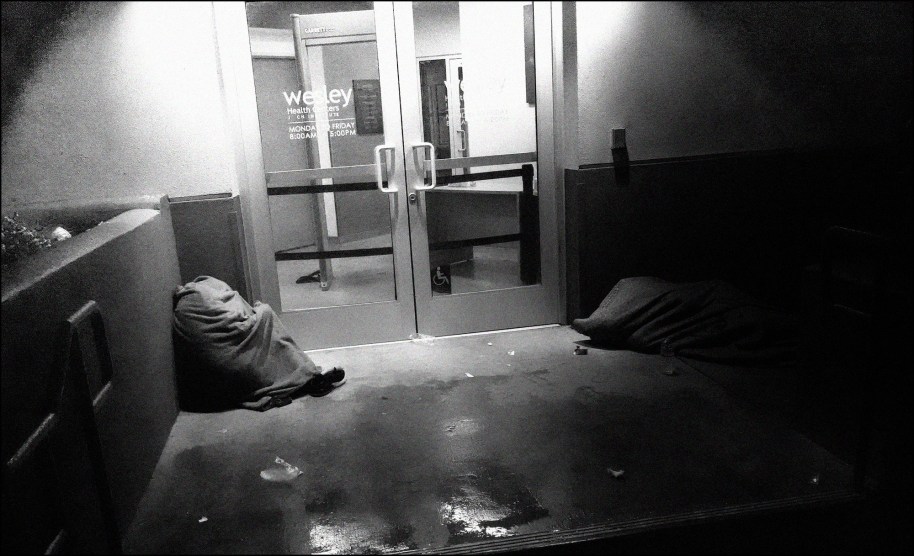
A pair of homeless people on Skid Row, about a mile from the Vignes Street project.Kevin Drum
As you probably know, Los Angeles has an enormous homelessness problem. Today, however, the LA Times reported some good news about a new homeless shelter being built downtown on Vignes Street:
When the last touches of landscaping are done next month, the 232-bed Vignes Street development will have shattered the axiom that homeless housing takes years to build and is exorbitantly expensive. From start to finish in under five months and at a cost of about $200,000 per bed, it has shaved years and hundreds of thousands of dollars off a traditional homeless housing project.
….Unlike traditional homeless housing projects that are either designed for permanent residency with services or for short-term shelter, the Vignes complex will have both. The two main buildings, constructed of once-used shipping containers, will have 132 units of permanent housing. The trailers, each divided into five units, will be for interim housing. The administrative building will house dining facilities, laundry and support services such as case management and counseling to serve both the permanent and interim residents.
I don’t quite understand the obsession with shipping containers, but whatever. If it works, it works. But how did it work so quickly? The problem with homeless shelters isn’t usually either money or the will to build them, it’s community opposition; building codes; environmental laws; and other rules specially tailored for the homeless that drive up costs and extend timelines. So what’s up with the Vignes Street project?
The bulk of the funding came from the federal CARES Act, allowing the county to sidestep the usual convoluted process of finding money for affordable housing. And the health emergency provided justification for exemptions from environmental review and competitive bidding. Another bonus was the 4-acre downtown parcel. The property had long been a factory that manufactured oil well equipment and later a machine shop. The buildings were leveled in 2018, and the county had bought the property as part of the jail replacement project that the Board of Supervisors later shelved in its decision to shift resources from jail to community care.
….There were also intangibles that motivated everyone involved, said Mark Pestrella, the director of public works….The authorization in [Hilda] Solis’ board motion to skip competitive bidding allowed Pestrella to seek out Bernards, a design and construction firm that he said was reliable and would work with the county “hands-on in a construction, not just contracting, relationship.”
Well, that explains it. It’s downtown in an industrial area next to the jail, so nobody objected. There were no strings attached to the money because funding came from the CARES Act. It was exempt from California’s lengthy—and typically litigious—environmental review process. The county already owned the property. And the board of directors allowed the project to skip competitive bidding, another routinely litigious process.
A lot of people don’t realize that it’s not construction or site selection or the dedication of public servants that slows down the construction of homeless shelters. Often it’s not even the money. Rather, it’s the massive tangle of rules and community resistance that simply can’t be ignored or sliced through like some kind of bureaucratic Gordian knot. If it weren’t for that, shelters ranging from tent encampments all the way to single-family apartments could be built quickly and cheaply to meet the needs of all different kinds of homeless people. Los Angeles just proved it.














